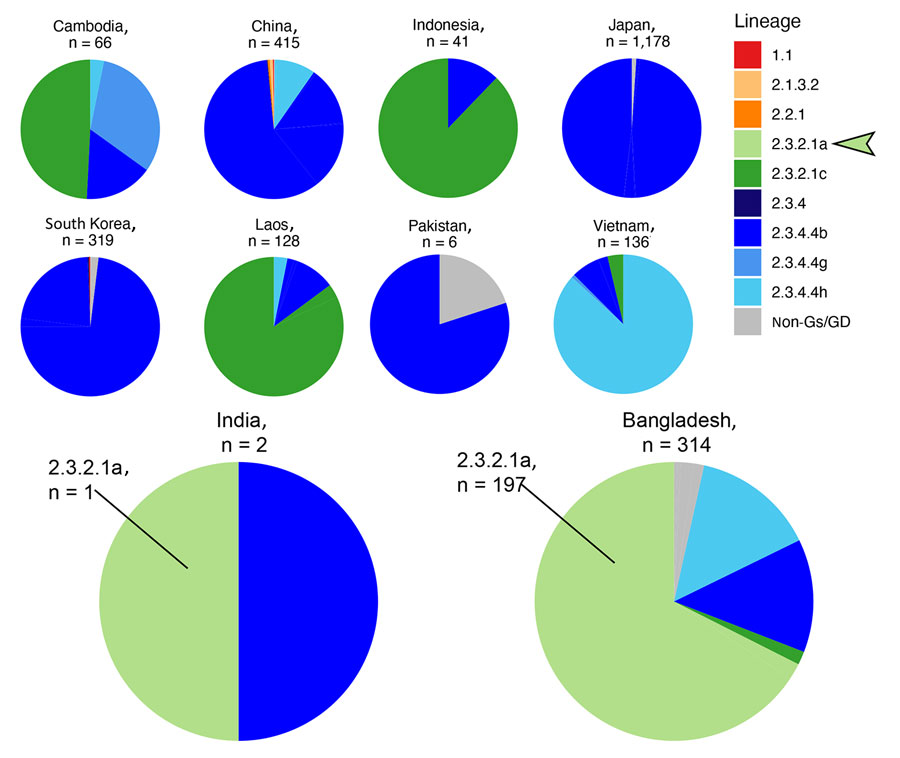Volume 31, Number 1—January 2025
Dispatch
Influenza A(H5N1) Virus Clade 2.3.2.1a in Traveler Returning to Australia from India, 2024
Figure 2

Figure 2. Numbers and diversity of highly pathogenic avian influenza A(H5Nx) virus isolates reported in South and East Asia in GISAID (https://www.gisaid.org) during January 1, 2020–July 29, 2024. Pie charts for India and Bangladesh, the only 2 countries in which clade 2.3.2.1a hemagglutinin sequences (light green, arrow) have been deposited into GISAID, have been enlarged.
1These authors contributed equally to this article.
Page created: November 20, 2024
Page updated: December 22, 2024
Page reviewed: December 22, 2024
The conclusions, findings, and opinions expressed by authors contributing to this journal do not necessarily reflect the official position of the U.S. Department of Health and Human Services, the Public Health Service, the Centers for Disease Control and Prevention, or the authors' affiliated institutions. Use of trade names is for identification only and does not imply endorsement by any of the groups named above.